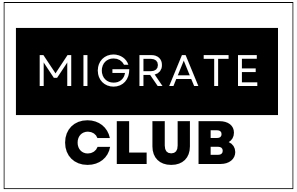The United States remains a top destination for international students, offering a vibrant academic environment and diverse cultural experiences. In 2024, India leads with the highest number of students in the US, based on F-1 visa issuances during the first half of the year. The US Consulate General in Mumbai expects a 10% rise in visa applications from Indian students this year. Beyond academics, many students seek practical work experience in their fields.
Fortunately, the US offers two visa programs for this purpose: Curricular Practical Training (CPT) and Optional Practical Training (OPT).
This article explores how F-1 international students can work while studying in the US, detailing the differences between CPT and OPT to help students navigate their options for gaining valuable work experience.
The Benefits of CPT and OPT
Imagine interning at a cutting-edge tech company in Silicon Valley or assisting a renowned research team at a prestigious university. With CPT and OPT, these opportunities become accessible for international F-1 visa holders, allowing them to excel academically while gaining practical skills that enhance their competitiveness in the job market post-graduation. These programs are designed to bridge the gap between theoretical knowledge and practical application, making graduates well-prepared for the challenges of their respective industries.
Curricular Practical Training (CPT)
CPT allows F-1 visa students to gain practical work experience directly related to their academic major. This can include internships, cooperative education programs, or practicums integral to their curriculum. Participation in CPT not only enhances students’ learning experience but also provides a platform to build professional networks that can be beneficial for future job searches. Here’s a closer look at what CPT entails:
- Types of CPT:
- Part-time CPT: Allows students to work 20 hours or less per week. This is ideal for students who wish to balance their academic responsibilities with gaining work experience.
- Full-time CPT: Allows students to work more than 20 hours per week. Full-time CPT is usually utilized during summer breaks or other periods when students are not taking a full course load.
Students should consult their institution’s international office for specific document requirements. Generally, the following documents are needed:
- CPT authorization form from the academic department
- Job offer letter
- Current Form I-20
- Passport and visa
Engaging in CPT requires careful planning. Students must ensure that their work experience aligns with their academic goals and that they have received the necessary approvals from their academic department and the International Student Services (ISS) office.
Optional Practical Training (OPT)
OPT allows students to gain practical experience in their field of study for up to 12 months. OPT is recommended by the university’s international office but requires approval from USCIS (United States Citizenship and Immigration Services). The flexibility of OPT makes it a popular choice among international students, as it allows them to work in various settings, gaining a broad range of experiences. Students can apply for OPT either before completing their studies (pre-completion) or after (post-completion). Students with STEM degrees can extend their post-completion OPT by an additional 24 months, providing a significant advantage for those in science, technology, engineering, and mathematics fields. Here are the different types of OPT:
- Pre-completion OPT: Begins before the completion of the academic program and is deducted from the 12-month eligibility. This option is suitable for students who wish to gain work experience while still completing their studies.
- Post-completion OPT: Begins after course completion and is the most popular option for students. This allows graduates to gain full-time work experience in their field of study, enhancing their employability.
- STEM OPT: A 24-month extension available for certain STEM majors. This extension is particularly beneficial for students in high-demand fields, allowing them to gain extended work experience in the US.
Key Differences Between CPT and OPT
Understanding the key differences between CPT and OPT is crucial for making an informed decision. Here’s a breakdown of the primary distinctions:
- Timing:
- CPT: Designed for work experience during the academic program. It integrates work with study, providing a holistic educational experience.
- OPT: Can be used during (pre-completion) or after (post-completion) the academic program. This flexibility allows students to choose the most suitable time to gain work experience.
- Authorization:
- CPT: Requires approval from the International Student Services (ISS) and the academic department. This ensures that the work experience is closely tied to the student’s academic goals.
- OPT: Requires approval from USCIS. This process is more formal and involves an application fee, reflecting the regulatory oversight involved in OPT.
- Duration:
- CPT: Can be used for up to 12 months and can be part-time or full-time. The duration of CPT is closely tied to the student’s academic calendar.
- OPT: Can be used for up to 12 months, with a possible 24-month extension for STEM graduates. This provides a longer period for gaining work experience, especially for students in STEM fields.
- Work Hours:
- CPT: Part-time (20 hours or less per week) during school and full-time (more than 20 hours) during breaks. This structure allows students to manage their academic and work commitments effectively.
- OPT: Typically full-time after graduation. This full-time commitment post-graduation enables students to immerse themselves fully in their work roles.
- Application Fee:
- CPT: Does not have an application fee. This makes it a cost-effective option for gaining work experience.
- OPT: Requires an application fee. This fee is part of the formal application process for obtaining USCIS approval.
Choosing the Right Path: CPT or OPT?
The choice between CPT and OPT depends on individual goals and academic programs. Here are some considerations to help make the decision:
- For early practical experience: Choose CPT if your program offers internships or co-op opportunities integrated into your coursework. This allows you to gain relevant work experience while completing your degree.
- For post-graduation job search: Choose OPT if you want dedicated time after graduation to gain work experience and strengthen your resume. OPT provides a valuable opportunity to apply what you’ve learned in a real-world setting.
Next Steps: Planning Your Career Path
CPT and OPT provide international students with valuable opportunities to gain work experience in the US. To get started, consult your school’s ISS office to discuss program options and eligibility requirements. They can also guide you through the application process for both CPT and OPT. Here’s a step-by-step approach:
- Consult your academic advisor: Discuss how work experience through CPT or OPT can enhance your academic and career goals.
- Visit the ISS office: Get detailed information on eligibility requirements, application procedures, and deadlines.
- Plan ahead: Ensure that your application materials, such as the CPT authorization form, job offer letter, Form I-20, and other necessary documents, are prepared in advance.
- Submit applications: Follow the guidelines provided by your ISS office for CPT or apply through USCIS for OPT.
- Stay informed: Keep track of any updates or changes in policies regarding CPT and OPT to ensure compliance with all requirements.
With careful planning and the right program, students can leverage their US education and gain the experience needed for a successful career in their chosen field. Practical work experience through CPT and OPT not only enhances your resume but also provides invaluable insights into your industry, helping you make informed career decisions. Embrace these opportunities to build a strong foundation for your future professional endeavors.

























